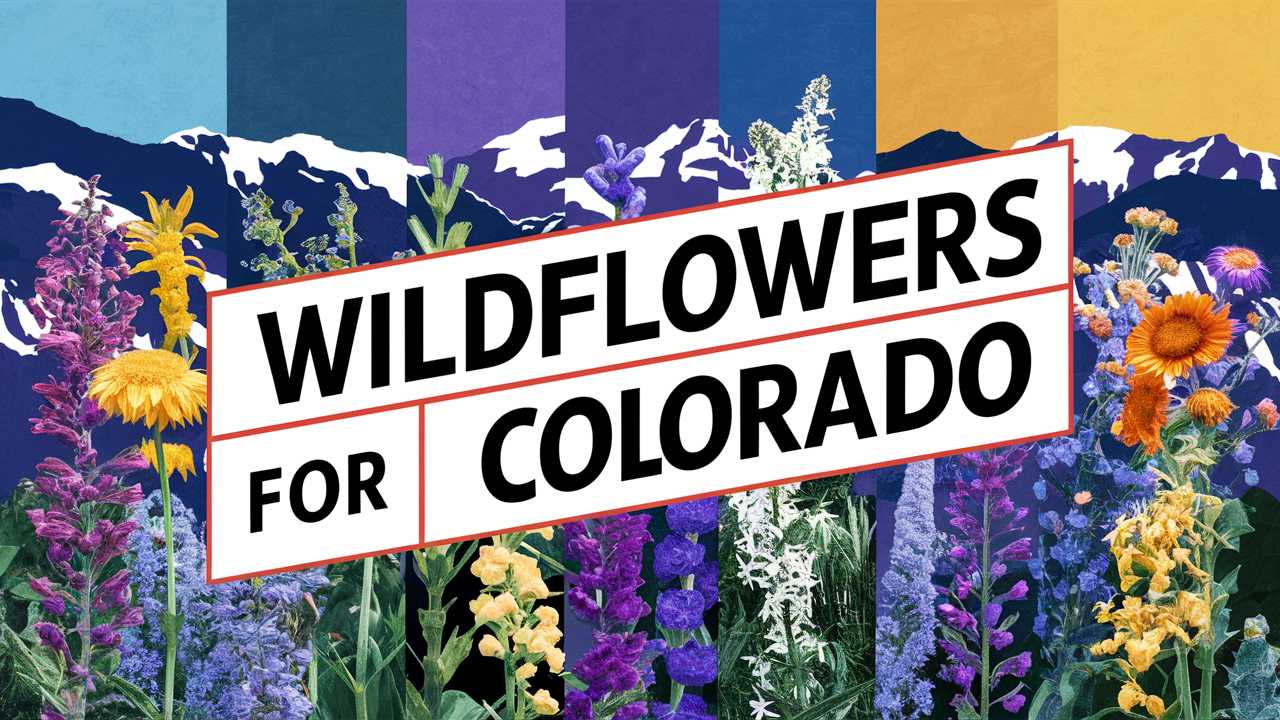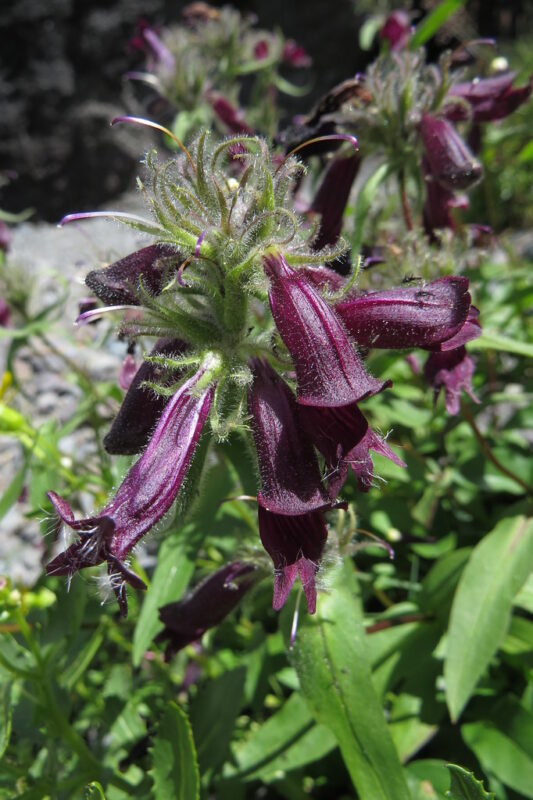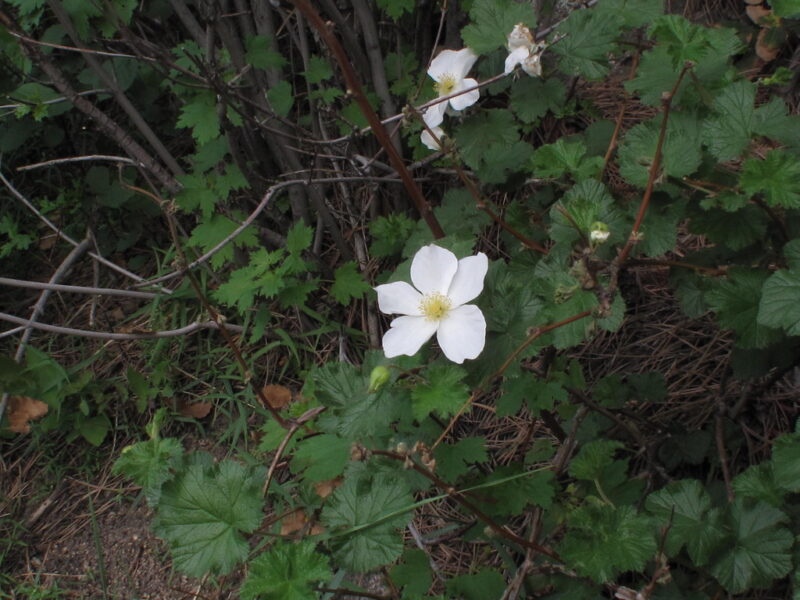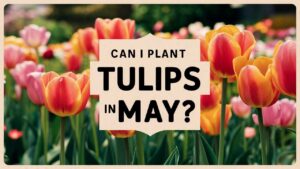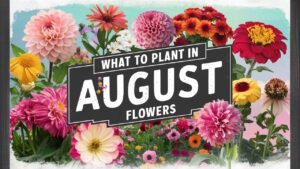This post highlights some of the most beautiful and significant wildflowers found in Colorado, exploring their characteristics, habitats, and cultural importance.
Blanket Flower (Gaillardia spp.)
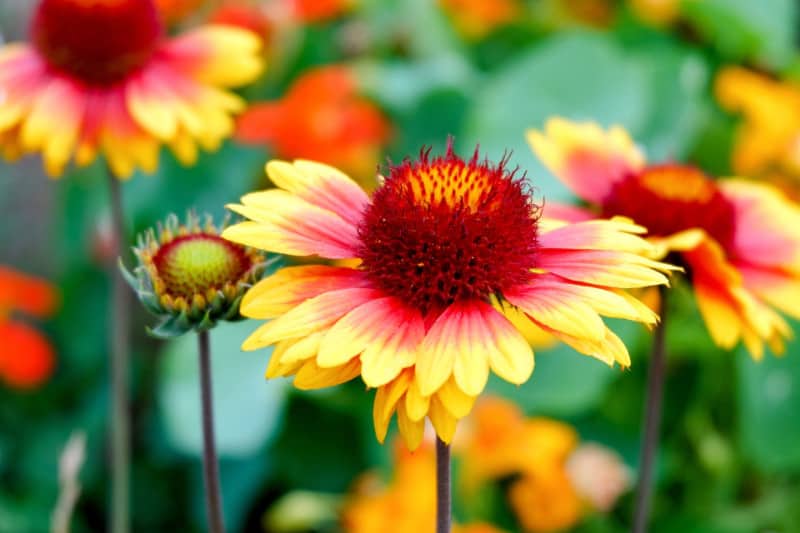
The Blanket Flower, or Gaillardia, is known for its vibrant, daisy-like blooms that range in color from fiery reds and yellows to soft oranges. This perennial blooms from late spring to early fall, making it a popular choice for gardens. In Colorado, these flowers are commonly found in sunny meadows and along roadsides, thriving in well-drained soil.
What makes the Blanket Flower particularly interesting is its drought tolerance, an important trait for the arid regions of Colorado. Pollinators, especially bees and butterflies, are drawn to these blossoms, making them vital for the local ecosystem. Additionally, the seeds are consumed by various birds, showcasing the flower’s importance in the food web.
Scott’s Sugarbowls (Clematis scottii)
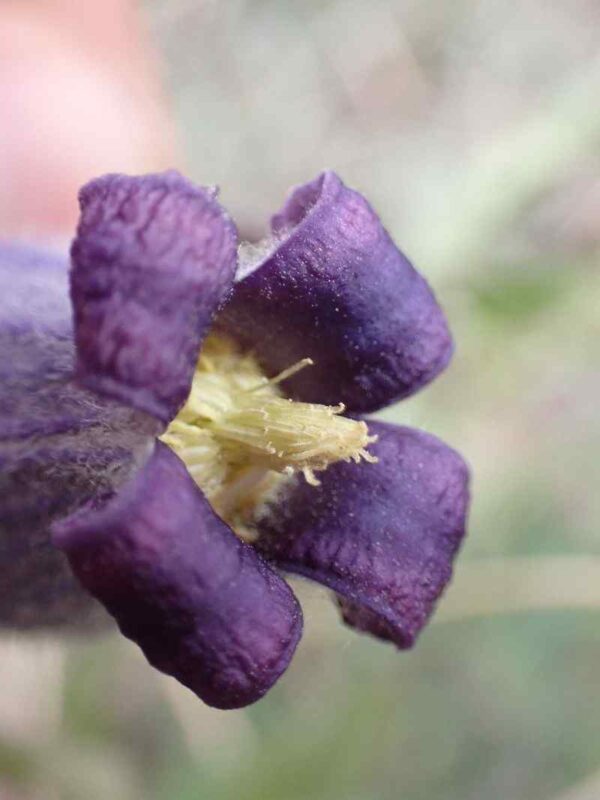
Scott’s Sugarbowls is a stunning wildflower that many may not recognize by name. This climbing vine features delicate, bell-shaped, purple flowers that bloom in early summer. Found primarily in the foothills and lower montane regions of Colorado, Scott’s Sugarbowls thrives in well-drained soils and prefers sunny to partially shaded areas.
This species is particularly unique due to its unusual form and habitat. It often grows in sandy or rocky soils, climbing over shrubs and fences with its twining tendrils. The flowers have a distinct sweet fragrance that attracts a variety of pollinators. They are not only aesthetically pleasing but are also integral to the ecosystem, enhancing biodiversity in their respective areas.
Grand Mesa Penstemon (Penstemon mensarum)
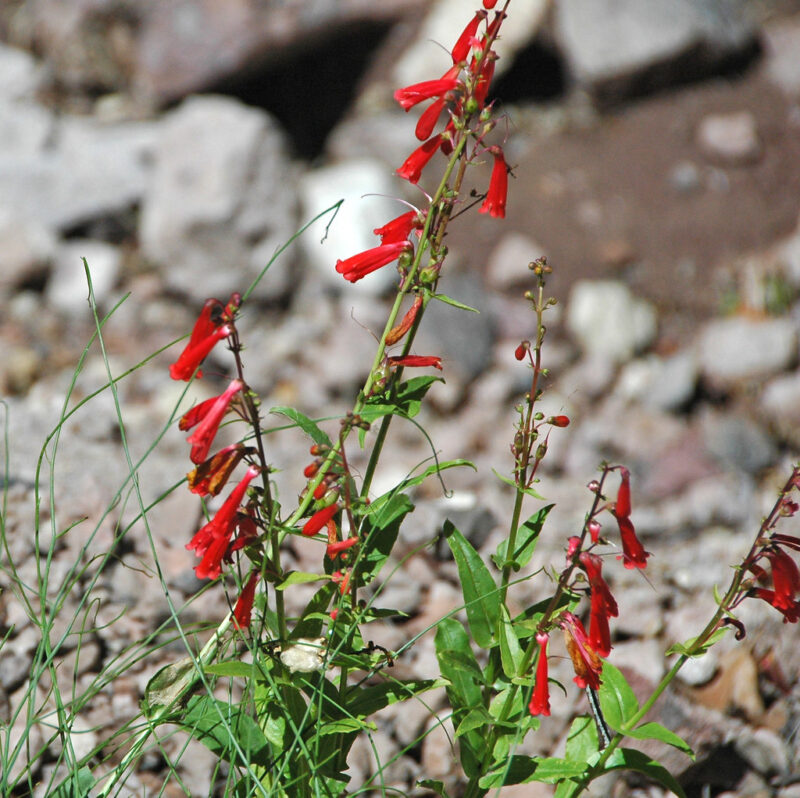
The Grand Mesa Penstemon is a delightful addition to Colorado’s wildflower palette. Found predominantly in the Grand Mesa region, this flowering plant features striking tubular blossoms that range from deep purple to soft lavender. It blooms in late spring to early summer, attracting hummingbirds and bees who are enticed by their nectar-rich flowers.
A remarkable aspect of the Grand Mesa Penstemon is its adaptation to the local environment. It thrives in rocky soils and at higher elevations, showcasing its resilience against harsh conditions. This wildflower is not just visually captivating but also serves an essential role in sustaining local wildlife, making it a crucial part of Colorado’s mountainous ecosystems.
Western Wallflower (Erysimum capitatum)
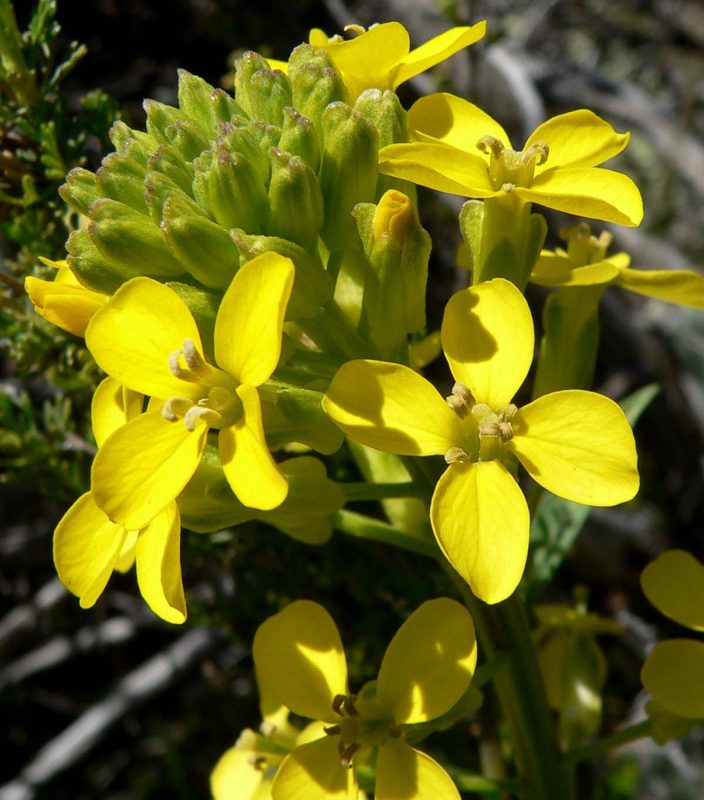
The Western Wallflower is another exquisite wildflower that graces Colorado with its presence. With its bright yellow to orange flowers arranged in clusters, it can be spotted blooming from late spring through the early summer months. This flower is commonly found in open, disturbed areas, such as along roadsides and in abandoned fields.
One interesting characteristic of the Western Wallflower is its ability to thrive in various soil types, including rocky and clay-rich environments. The plant is also a magnet for pollinators, particularly bees and butterflies, contributing significantly to the pollination of other plants in its ecosystem. The Western Wallflower is essential not just for its beauty, but also for its role in maintaining ecological balance and supporting biodiversity.
Rocky Mountain Beeplant (Cleome serrulata)
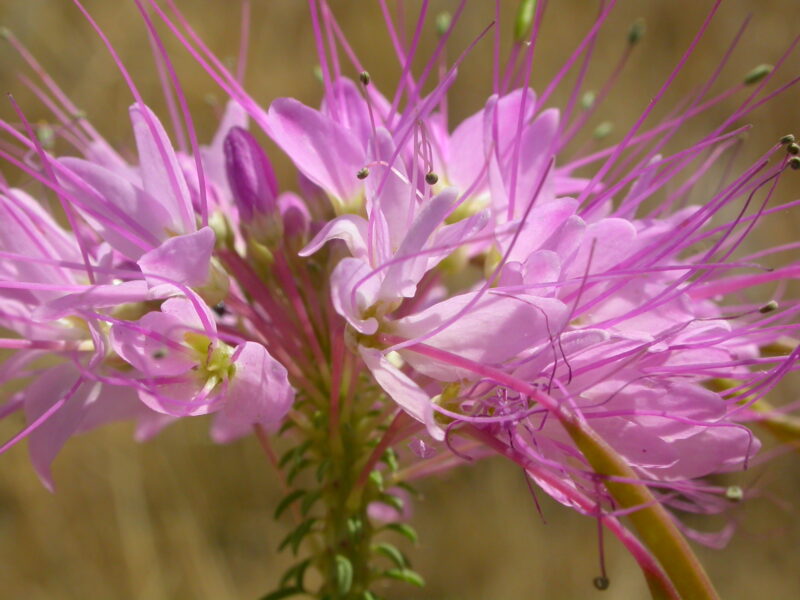
The Rocky Mountain Beeplant, with its striking pink to violet flowers, is a sight to behold in Colorado’s wildflower landscape. Blooming from summer to early fall, this plant displays elongated flower clusters that attract a multitude of pollinators, earning it its name. It thrives in disturbed soils, making it common in meadows and along roadsides.
The Rocky Mountain Beeplant is particularly important for its ecological contributions—it provides necessary food sources for bees, butterflies, and other pollinators during late summer when other resources may become scarce. Additionally, Native American tribes historically used this plant for various medicinal and culinary purposes, highlighting its cultural significance alongside its ecological benefits.
Purple Poppy Mallow (Callirhoe involucrata)

The Purple Poppy Mallow is a perennial wildflower with stunning magenta to purple blooms that capture the attention of anyone walking by. This unique flower blooms from spring to summer and is found in dry plains, rocky hills, and disturbed areas throughout Colorado.
What sets the Purple Poppy Mallow apart is not only its vibrant color but also its growth habit. The plant has a low, sprawling form that allows it to cover ground effectively, helping to prevent soil erosion. It is also a favorite of pollinators, particularly bees and butterflies. In addition to its ecological benefits, the Purple Poppy Mallow is often admired for its ornamental value and is increasingly used in gardening to create colorful landscapes.
Windflower (Anemone multifida)
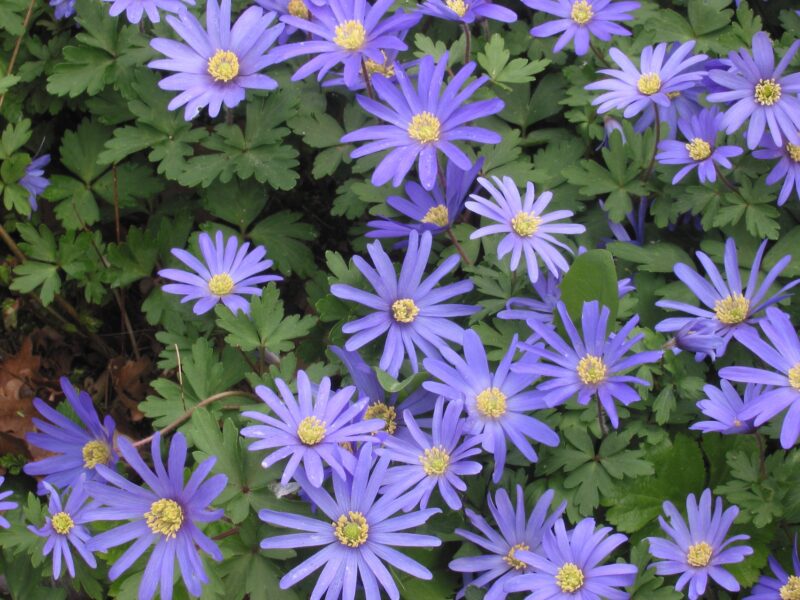
Windflower, or Anemone multifida, is an enchanting wildflower that brings a touch of elegance to Colorado’s meadows. With delicate, white to blue flowers that resemble small daisies, this perennial blooms in late spring to early summer, often found in the mountainous regions of the state.
The Windflower thrives in well-drained soils and full sunlight, making it a resilient plant that flourishes despite Colorado’s challenging weather conditions. Its name, derived from the Greek word for “wind,” is fitting, as the flowers often dance gracefully with the breeze. Importantly, this wildflower plays a vital role in attracting various insects, contributing to the vibrancy and diversity of Colorado’s ecosystems.
Purple Prairie Clover (Dalea purpurea)

Purple Prairie Clover is a perennial wildflower that thrives in the open prairies and grasslands of Colorado. With its long, cylindrical flower spikes adorned with vibrant purple blooms, this flower captures the essence of the plains during the summer months.
This clover species is known for its deep taproot, allowing it to survive in drought conditions while providing essential nutrients to the soil. The blooms attract bees and butterflies, making it a critical plant for pollinator health. Moreover, the Purple Prairie Clover is widely used in ecological restoration projects to help stabilize soil and promote native biodiversity in disturbed habitats.
Showy Goldeneye (Heliomeris multiflora)
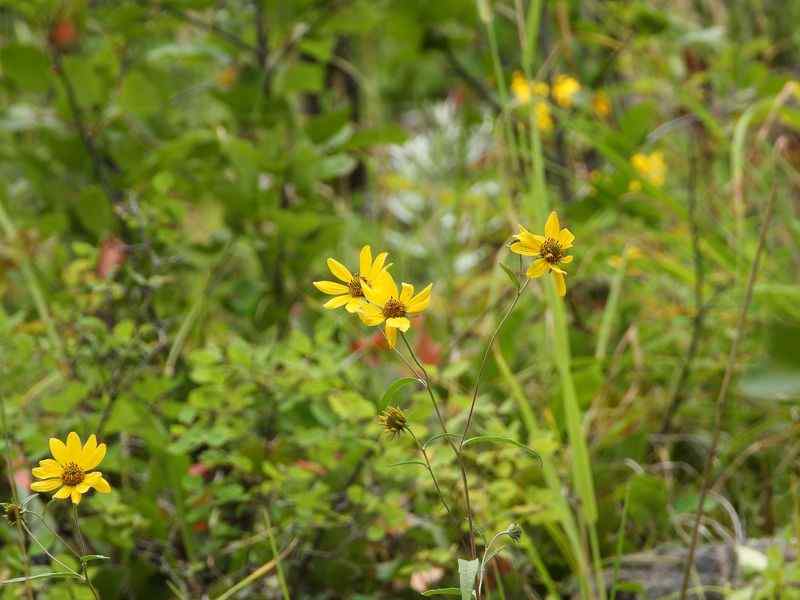
The Showy Goldeneye is a striking wildflower characterized by its bright yellow petals and dark center. Blooming from summer to fall, this flower adds cheerful color to Colorado’s landscapes, often found in open meadows and along roadsides.
A native plant, the Showy Goldeneye is not just visually appealing; it also plays a significant ecological role. Its flowers serve as a food source for bees and butterflies, supporting the pollinator population. The plant’s ability to thrive in various soil conditions makes it adaptable and valuable in creating diverse habitats. It often attracts attention for its cheerful and prolific blooms, making it a favorite among local nature lovers.
Blue Flax (Linum lewisii)

Blue Flax is celebrated for its striking blue flowers that bloom in the light of the summer sun. This wildflower is often found in meadows and open grasslands, showcasing delicate, soft petals that open during the day and close at night.
This perennial is known for its adaptability and resilience in the face of Colorado’s variable climate. The seeds of Blue Flax are used by various wildlife, while the plant itself serves as an important source of nectar for pollinators. Furthermore, its fibers have historically been used for weaving and crafts, adding a cultural layer to its significance in Colorado’s native flora.
Canadian Goldenrod (Solidago canadensis)
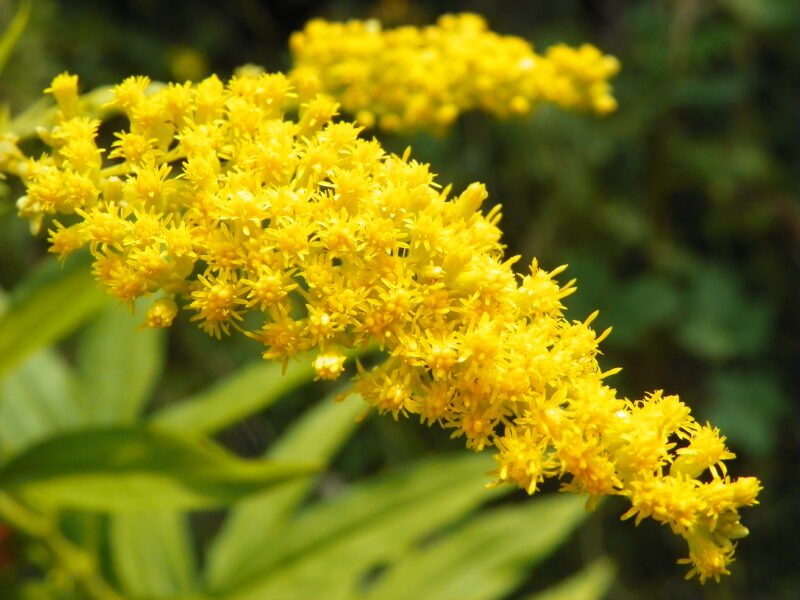
Canadian Goldenrod is a robust wildflower commonly found in Colorado’s prairies and along roadsides. With its vibrant yellow flower clusters that bloom from late summer to fall, this plant is notorious for attracting various insects, particularly pollinators, as they seek out its nectar-rich flowers.
One of the most fascinating aspects of Canadian Goldenrod is its ability to thrive in diverse environments, from disturbed soils to rich meadows. This adaptability allows it to play an essential role in local ecosystems by providing sustenance to numerous species. Rich in ecological value, it also contributes to soil health, making it a staple in ecological restoration efforts across the state.
Whipple’s Penstemon (Penstemon whippleanus)
Whipple’s Penstemon is a beautiful flowering plant native to Colorado’s mountainous regions. Blooming in early summer, this wildflower features trumpet-shaped blossoms that range from deep purple to blue, often found in rocky terrains and well-drained soils.
This species is not only visually striking but also ecologically significant. It attracts hummingbirds and various pollinators, which are crucial for its reproduction. Its ability to grow in challenging environments demonstrates the resilience of Colorado’s native flora. The Whipple’s Penstemon is a testament to the beauty of the state’s ecosystems, capturing the hearts of nature enthusiasts who witness its floral display.
American Pasqueflower (Pulsatilla nuttalliana)
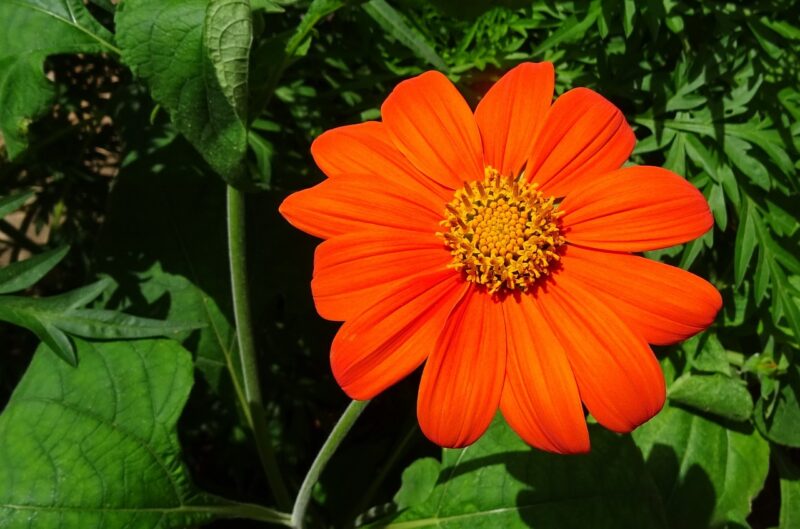
The American Pasqueflower is a stunning wildflower that heralds spring in Colorado’s grasslands and open woodlands. Known for its charming lavender flowers and distinctive fuzzy seed heads, this perennial blooms in early spring, often pushing through the remnants of snow.
This flower is celebrated for its beauty as well as its ecological importance. It provides early-season nectar for bees emerging from winter, and its early blooms are critically important for pollinator populations that are just waking up. The American Pasqueflower’s ability to grow in challenging conditions makes it a symbol of resilience and renewal in Colorado’s diverse landscapes.
Butterfly Weed (Asclepias tuberosa)
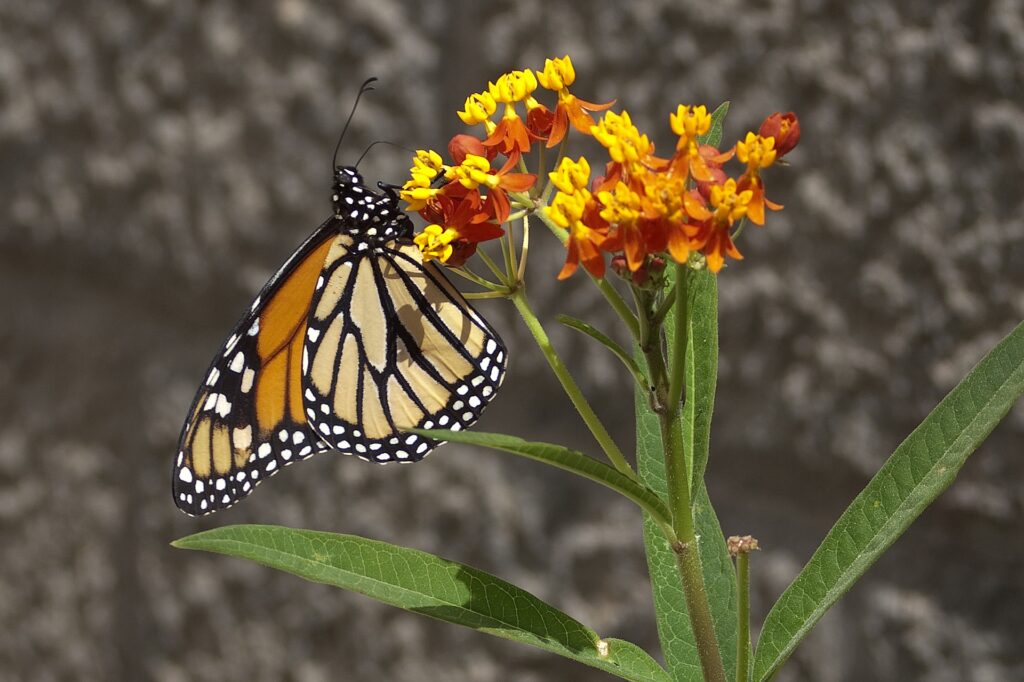
Butterfly Weed is a delightful perennial that showcases vibrant orange-yellow flowers, perfect for attracting pollinators like butterflies. This plant thrives in sun-soaked meadows and dry fields, often blooming in mid to late summer.
One of the most significant attributes of Butterfly Weed is its role as a host plant for monarch butterflies, making it a vital species for conservation efforts. Its deep taproot allows it to thrive in dry soils, contributing positively to the local ecosystem by providing nectar for various insects. The beauty and ecological importance of Butterfly Weed make it a beloved addition to gardens across Colorado.
Black-eyed Susan (Rudbeckia hirta)
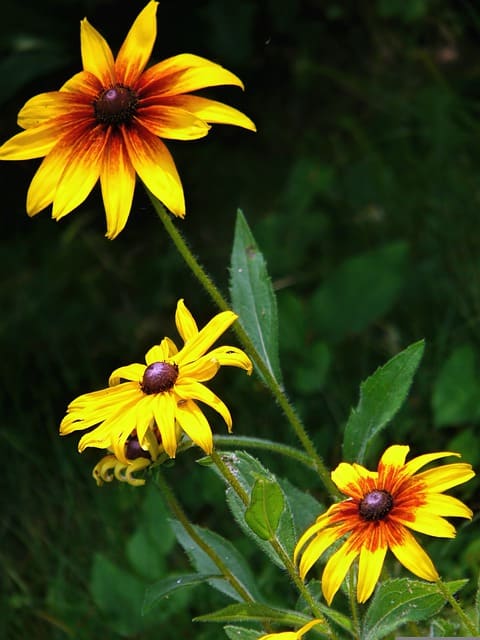
Black-eyed Susan is a beloved and easily identifiable wildflower, known for its striking yellow petals and dark brown center. Blooming from summer to fall, this hardy perennial thrives in diverse habitats, including meadows, roadways, and gardens throughout Colorado.
This flower’s resilience amid varying weather conditions makes it a favorite among gardeners and nature enthusiasts alike. Its nectar-rich blooms attract many pollinators, creating vibrant seasonal displays that support local biodiversity. As a staple in native plant gardening, Black-eyed Susan’s cheerful appearance and ecological benefits are a testament to its significance in Colorado’s flora.
Scarlet Globe Mallow (Sphaeralcea coccinea)
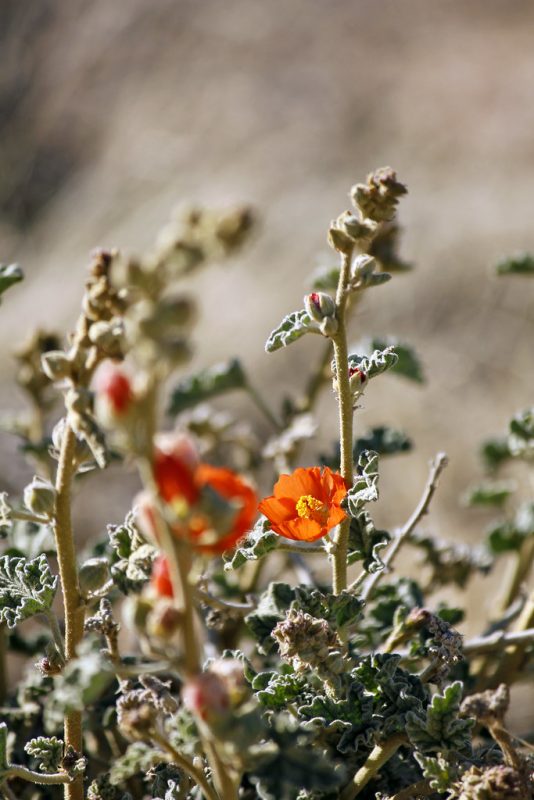
Scarlet Globe Mallow is a stunning Colorado wildflower characterized by its bright, fiery orange to red blossoms. Found in grasslands, open plains, and rocky slopes, this plant flourishes in full sunlight and well-drained soils.
The vibrant color of Scarlet Globe Mallow attracts various pollinators, making it a pillar in maintaining the ecological health of its environment. Its adaptability to dry conditions allows it to thrive in Colorado’s semi-arid climate, further enhancing its significance in local ecosystems. Gardeners treasure this wildflower for its eye-catching aesthetics and the vital role it plays in supporting pollinator populations.
Subalpine Larkspur (Delphinium barbeyi)
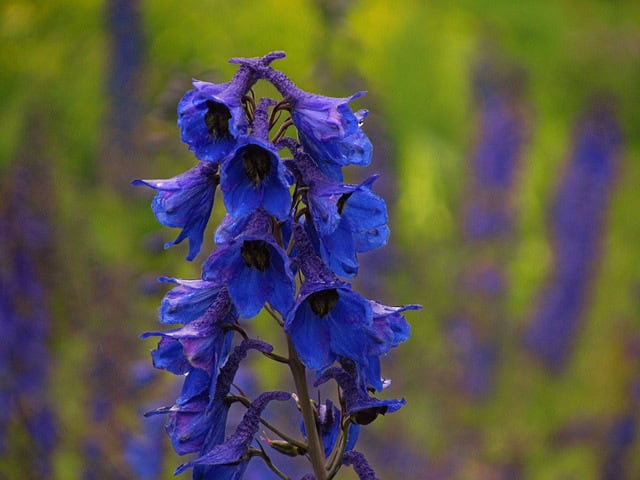
Subalpine Larkspur is one of the most beautifully unique wildflowers of Colorado, distinguished by its tall flowering spikes adorned with brilliant blue to purple flowers. Found in subalpine meadows and along mountain slopes, this plant blooms primarily in summer, drawing attention from hikers and nature lovers alike.
Larkspurs are known for their stunning beauty, but they also play a vital role in the ecosystem. Their flowers attract a variety of pollinators, including bees and butterflies, while offering essential habitats for smaller wildlife. The Subalpine Larkspur is an emblem of Colorado’s rich biodiversity and stunning mountain landscapes.
Small-leaf Pussytoes (Antennaria parvifolia)
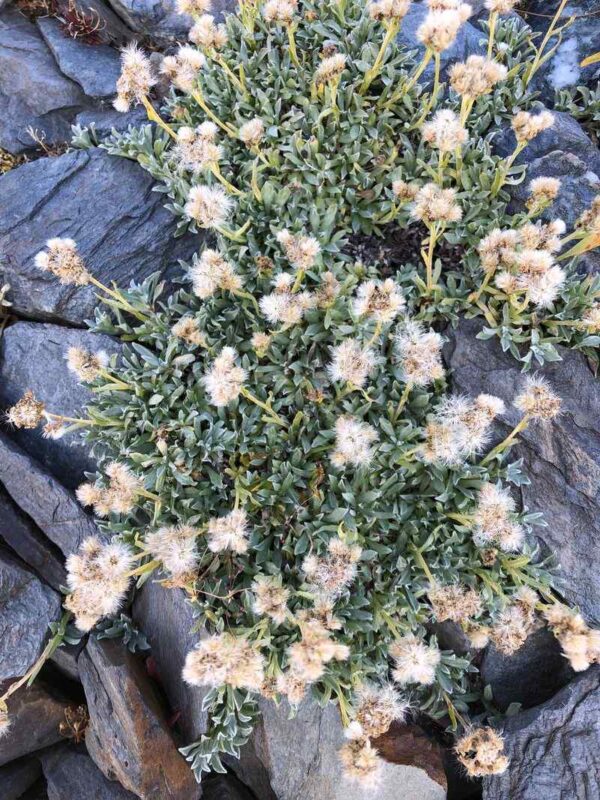
Small-leaf Pussytoes is a diminutive yet charming wildflower found in Colorado’s alpine and subalpine habitats. With its soft, gray-green leaves and small, white flower clusters, it blooms in late spring to early summer, often thriving in dry, rocky soils.
This hardy perennial is a crucial part of the alpine ecosystem, providing food for early-season pollinators. Its resilience enables it to withstand harsh weather conditions, making it an essential component of the alpine flora. Enthusiasts often appreciate Small-leaf Pussytoes for its understated beauty and its role in supporting wildlife through challenging seasons.
Boulder Raspberry (Oreobatus rubus deliciosus)
Boulder Raspberry is a native Colorado wildflower that often goes unnoticed due to its small and inconspicuous white blossoms. However, its lush green foliage and sweet berries make it an enjoyable find during summer months in the foothills and mountain areas.
The Boulder Raspberry thrives in a range of soil types and is notable for its edible fruits, which provide food for various wildlife, including birds and mammals. Additionally, the plant holds cultural significance as a food source for Native American tribes, who historically utilized the berries for culinary and medicinal purposes. Its unique qualities represent the rich cultural and ecological tapestry of Colorado’s flora.
Scarlet Bugler (Penstemon barbatus)
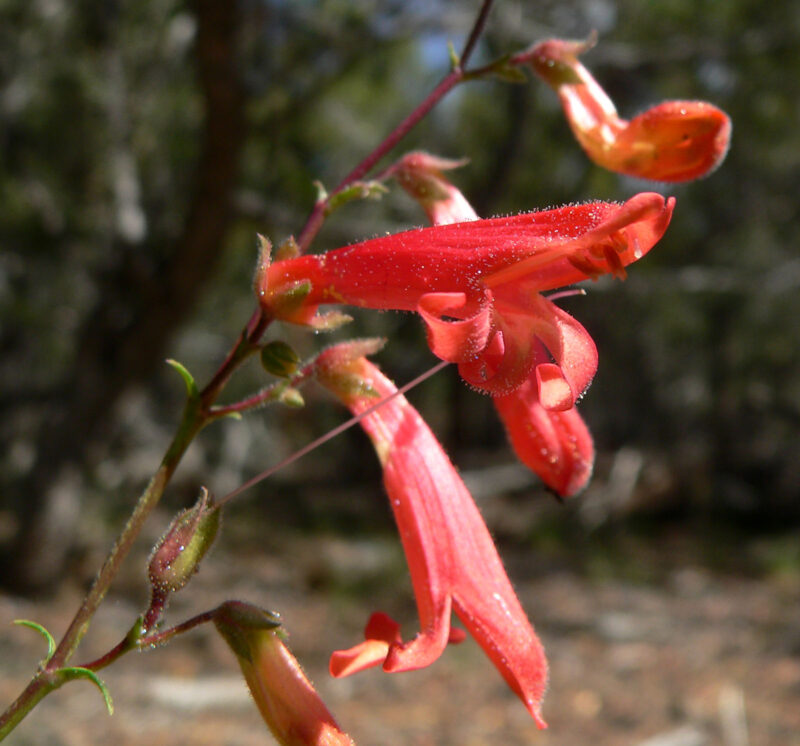
Scarlet Bugler is an eye-catching wildflower that thrives in Colorado’s mountainous regions, showcasing brilliant red tubular flowers that attract hummingbirds. Blooming from late spring through the summer, this plant is commonly found in sunny areas with well-drained soils.
The adaptability of the Scarlet Bugler makes it a valuable plant for gardens and conservation areas, as it supports pollinator populations and enhances biodiversity. Its vibrant blooms add incredible visual interest to the landscapes of Colorado, making it a sought-after species for both ecological restoration efforts and ornamental gardens alike.
Fringed Sage (Artemisia frigida)
Fringed Sage is a hardy perennial found in the more arid regions of Colorado. Known for its aromatic foliage and delicate, yellow flower clusters, this plant blooms primarily during the summer months. It thrives in dry, well-drained soils and is often found in grasslands and rocky meadows.
This sage species is essential for many reasons, including its role in stabilizing soil and preventing erosion in fragile ecosystems. Its aromatic leaves are known for attracting pollinators, who rely on the plant for nourishment. Fringed Sage is a living testament to the beauty and resilience of Colorado’s native flora.
Silky Lupine (Lupinus sericeus)
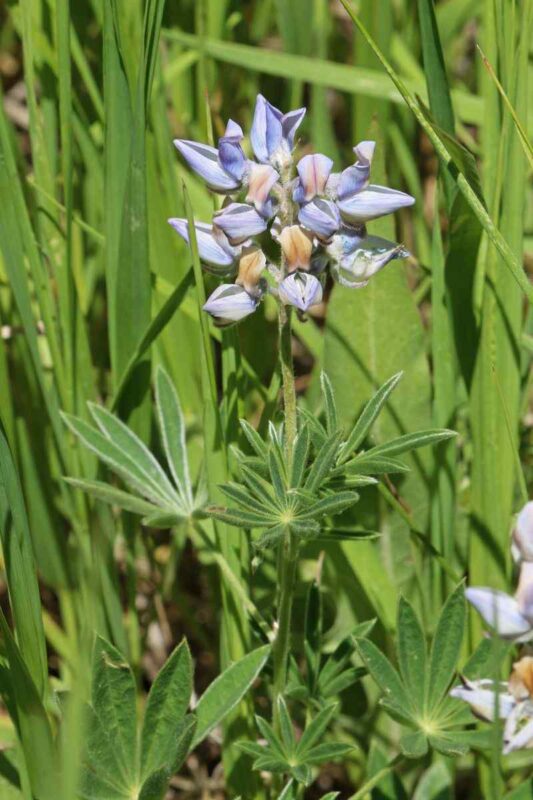
Silky Lupine is a captivating wildflower with lush green foliage and striking blue to purple flower spikes. This plant flourishes in mountain meadows, open forests, and grasslands, typically blooming from late spring through early summer.
Lupines are nitrogen-fixing plants, enriching the soil and providing essential nutrients for surrounding flora. They are particularly important for supporting local ecosystems, serving as a food source for various pollinators while enhancing habitat diversity. The Silky Lupine’s vibrant colors and ecological benefits position it as a cherished species in Colorado’s diverse landscapes.
Upright Prairie Coneflower (Ratibida columnifera)
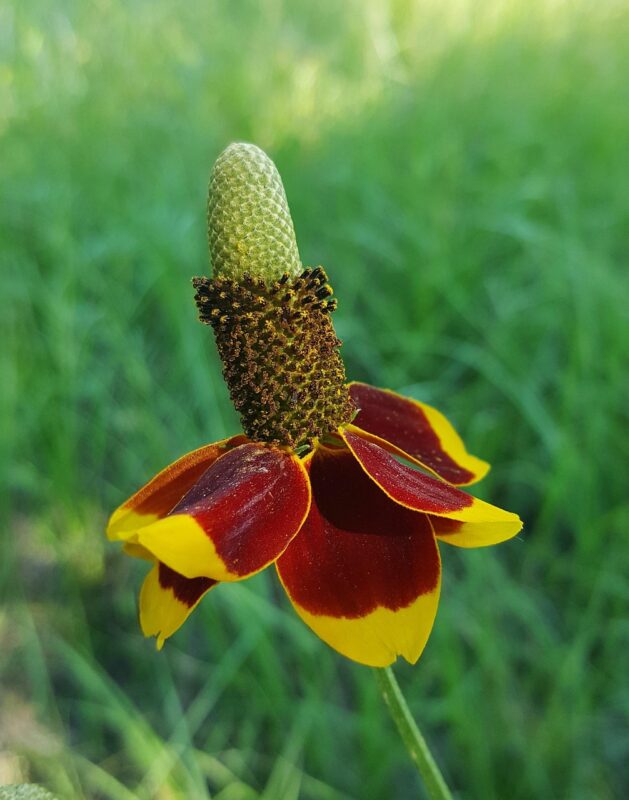
The Upright Prairie Coneflower is an iconic wildflower that adds character to Colorado’s grasslands. Blooming from early to late summer, this plant features distinctive yellow petals surrounding a prominent, cone-shaped center.
Known for its resilience, the Upright Prairie Coneflower thrives in a variety of soil types, often found in open fields and areas with low moisture. Its blooms provide valuable nectar for bees and butterflies, contributing to the overall health of local ecosystems. This coneflower’s ability to adapt and thrive makes it a vital component of Colorado’s native flora.
Pearly Everlasting (Anaphalis margaritacea)
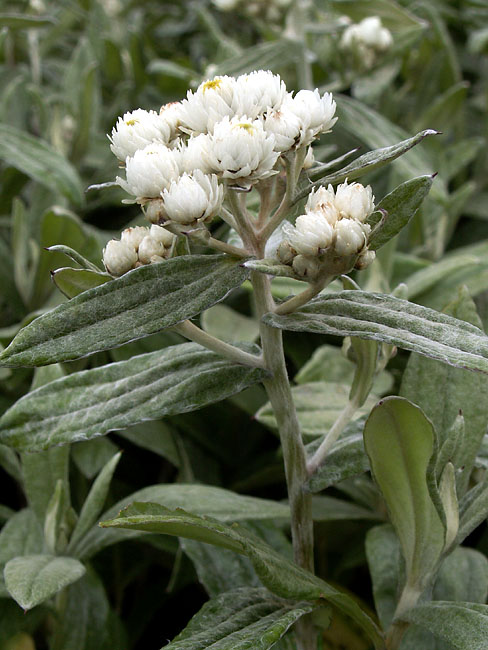
Pearly Everlasting is a unique wildflower that features clusters of small, white flowers resembling tiny daisies. This perennial blooms from summer to early fall and can often be found in dry fields and disturbed areas throughout Colorado.
This enchanting plant is particularly notable for its dried flower heads, which remain attached long after blooming, making them popular for ornamental uses in dried flower arrangements. Additionally, Pearly Everlasting is known to attract pollinators such as bees and butterflies, solidifying its role in promoting local biodiversity. With its ability to thrive in diverse soil conditions, this wildflower remains a favorite among gardening enthusiasts and nature lovers alike.
Colorado Blue Columbine (Aquilegia coerulea)

The Colorado Blue Columbine is perhaps one of the most iconic flowers of the state, often recognized as Colorado’s state flower. With its delicate blue and white flowers that resemble a ballerina’s skirt, this perennial is typically found in mountainous areas, thriving in moist, well-drained soils. Known for blooming in late spring to early summer, its enchanting appearance attracts various pollinators, especially hummingbirds.
In addition to its beauty, the Colorado Blue Columbine has significant cultural importance. It represents the rich biodiversity of Colorado and is celebrated by both locals and visitors alike. Collecting or disturbing these flowers in the wild is considered illegal in many areas, emphasizing the need for conservation efforts to protect this beautiful symbol of the state.
Scarlet Gilia (Ipomopsis aggregata)

Scarlet Gilia, known for its striking red tubular flowers, is a stunning wildflower that flourishes in Colorado’s mountainous regions. Typically blooming from mid-summer to early fall, these plants can often be found in rocky slopes and open woodlands. Their vivid color not only makes them stand out in the landscape but also serves a crucial role in their ecological niche by attracting hummingbirds and various insects.
Scarlet Gilia has adapted well to the harsh conditions of its environment, thriving in dry, sandy soils. Its ability to grow in less fertile areas highlights the resilience of Colorado’s native flora, making it a popular subject for hikers and nature photographers alike.
Shell-leaf Penstemon (Penstemon grandiflorus)
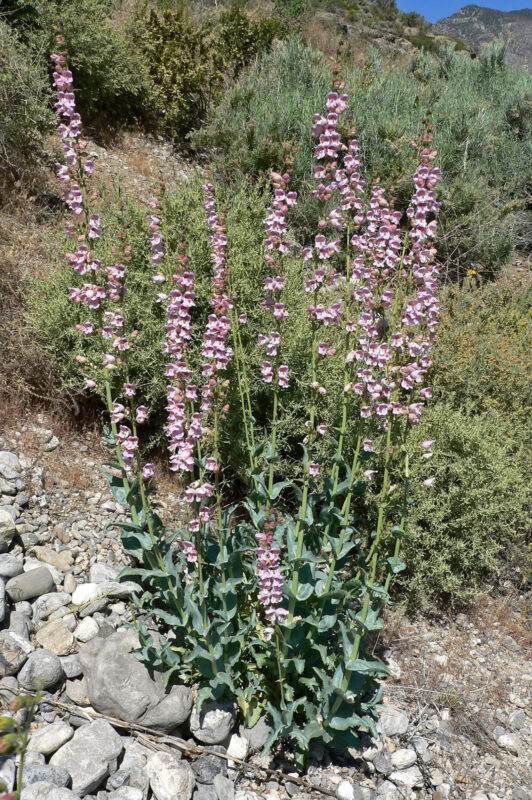
The Shell-leaf Penstemon showcases beautiful spikes of pink to purple flowers that bloom during the summer months. This perennial wildflower is typically found in open grasslands, rocky slopes, and disturbed areas across Colorado. The distinctive, shell-shaped leaves are a defining characteristic of this species, giving it a unique texture and appearance.
Known for their nectar-rich flowers, Shell-leaf Penstemon attracts a variety of pollinators, including bees and butterflies, making it vital for local ecosystems. Its hardiness allows it to thrive in challenging conditions, adding valuable color to gardens and wild landscapes alike.
Bee Balm (Monarda fistulosa)
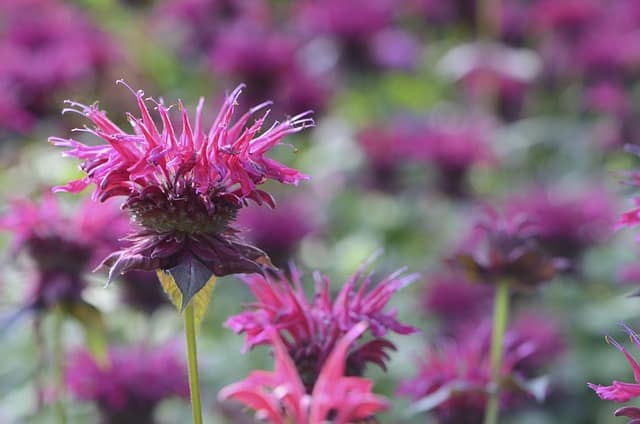
Bee Balm is a native plant known for its striking pink to purple flower clusters and aromatic foliage. Blooming in mid-summer, this wildflower thrives in wet meadows and along stream banks, showcasing its ability to adapt to various moisture levels. The plant’s pleasant scent and vibrant colors are irresistible to hummingbirds and bees, drawing them in for a feast of nectar.
Beyond its ecological role, Bee Balm has historical depth; it has been used by Native Americans for medicinal purposes, including treating colds and fevers. Today, gardeners value it not only for its pollinator-attracting qualities but also for its beauty as a perennial garden favorite.
Harebells (Campanula rotundifolia)
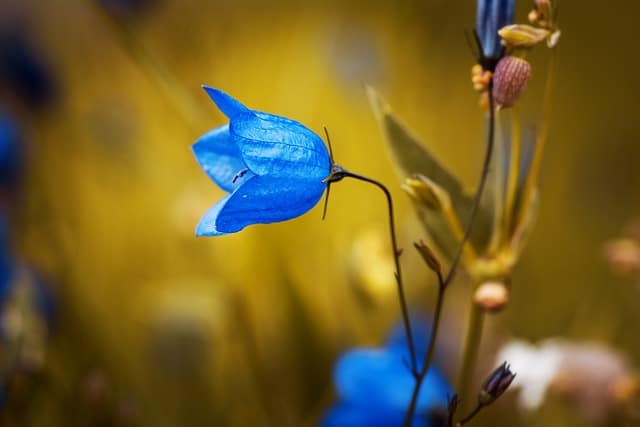
Harebells are charming wildflowers that grace Colorado’s alpine meadows and rocky slopes. Characterized by their delicate blue, bell-shaped flowers that nod gracefully in the breeze, these perennials bloom from late spring through early summer. Their preference for rocky, well-drained soils reflects their adaptation to the harsh, mountainous environment.
Harebells are often seen flourishing in partnership with other wildflowers, contributing to the rich tapestry of colors that makes the high-altitude regions of Colorado so picturesque. They attract bees and other pollinators, helping to maintain the health of local ecosystems.
Pink Mountain Heather (Phyllodoce empetriformis)
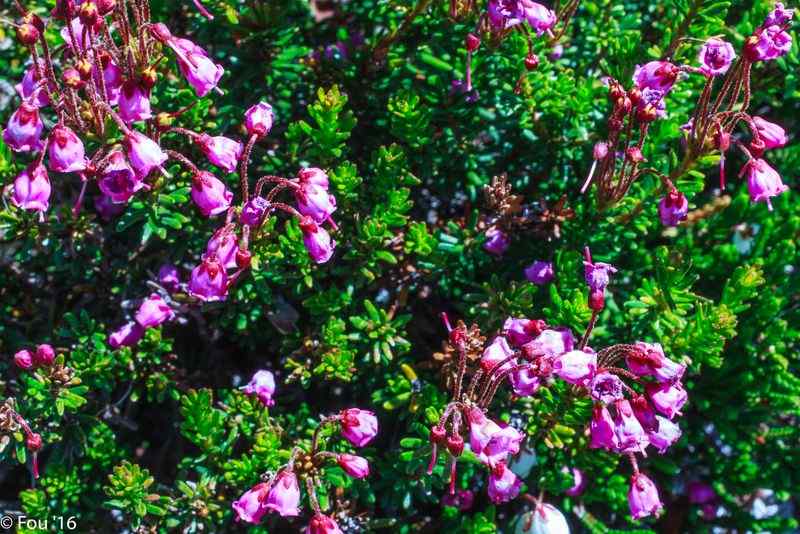
Pink Mountain Heather is an enchanting wildflower found predominantly in subalpine and alpine regions of Colorado. As the name suggests, this plant features lovely pink blooms that provide a beautiful contrast against the rocky terrain and evergreen forests. Typically blooming in summer, it thrives in acidic, well-drained soils, often carpeting the ground around rocky outcroppings.
Not only is Pink Mountain Heather visually appealing, but it also plays its part in supporting the local wildlife, providing nectar for pollinators. Its ability to survive the harsh mountain climate highlights the resilient nature of Colorado’s flora and offers a soothing touch to the rugged landscape.
Tall Fringed Bluebells (Mertensia ciliata)
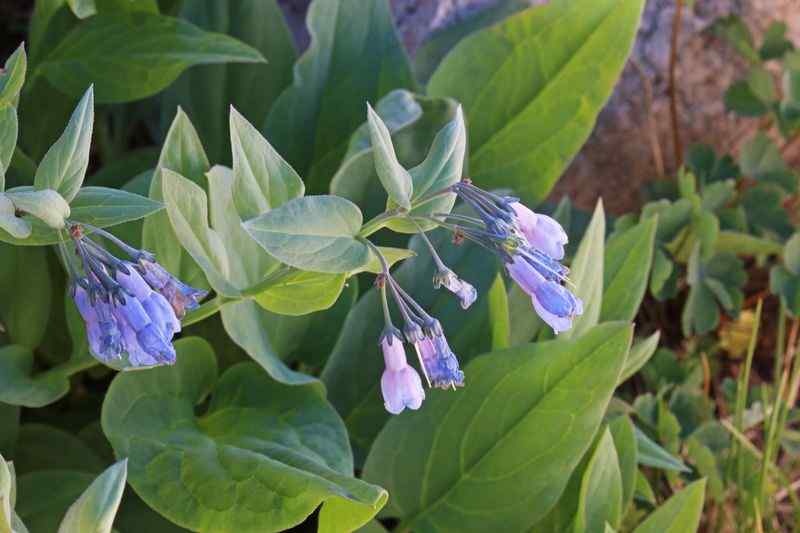
Tall Fringed Bluebells is a delightful wildflower that stands tall with clusters of enchanting blue blooms. Found in moist meadows and forest clearings, this perennial blooms from spring to early summer, attracting a variety of pollinators, including bumblebees and butterflies.
One remarkable feature of Tall Fringed Bluebells is their ability to thrive in wet conditions, often seen along the edges of streams and ponds. Their vivid blue color brings a refreshing burst of beauty to Colorado’s gardens and wild areas, making them a cherished wildflower among horticulturists and nature enthusiasts.
Plains Yellow Primrose (Calylophus serrulatus)

Plains Yellow Primrose is a sunny wildflower that brightens Colorado’s grasslands and open plains. This perennial blooms from late spring to summer, displaying charming yellow flowers with delicate petals. Known for its ability to thrive in poor and dry soils, it is often found in rocky or sandy environments, showcasing its adaptability.
The Plains Yellow Primrose is not only attractive but also supports various pollinators with its nectar-rich blooms. Its resilience in harsh environments makes it an important player in maintaining soil stability and supporting wildlife in its native habitats.
Sulphur Flower (Eriogonum umbrellatum)
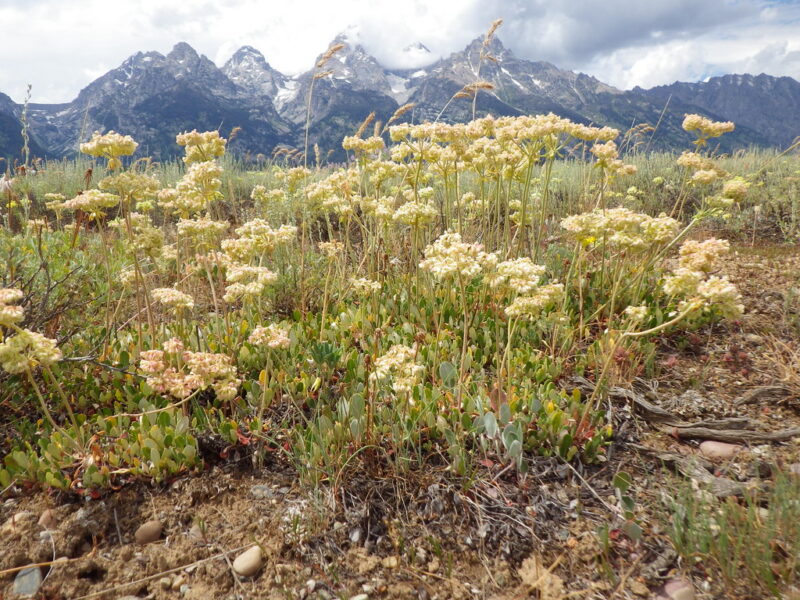
The Sulphur Flower, recognizable by its umbrella-like clusters of small yellow flowers, is a lovely addition to Colorado’s wildflower tapestry. This plant flourishes in arid and semi-arid regions, often found in rocky soils and sagebrush landscapes. The blooms appear in late spring through late summer, providing essential nectar for a variety of pollinators.
One fascinating aspect of the Sulphur Flower is its ability to adapt to different environments, thriving in conditions where many plants struggle. Its unique structure means it stands out even in the arid landscapes of Colorado, contributing to the wonderful diversity of the state’s flora and providing critical support for local ecosystems.
Beautiful Jacob’s Ladder (Polemonium pulcherrimum)
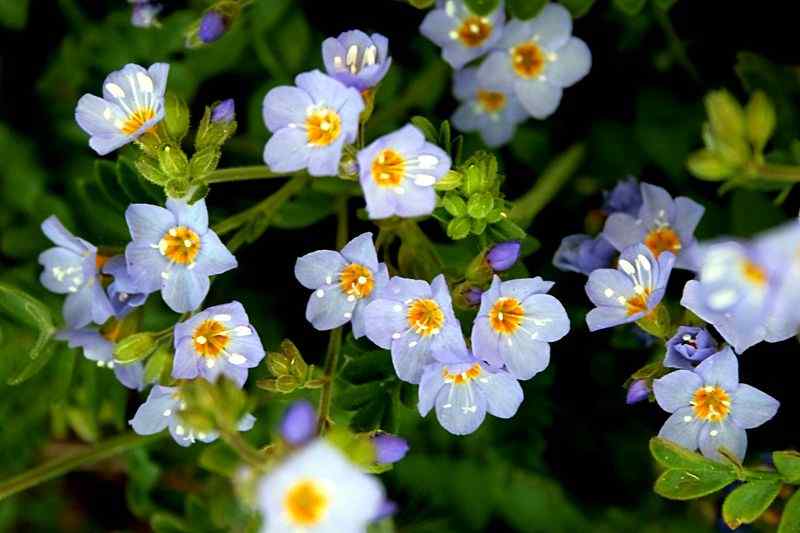
Beautiful Jacob’s Ladder is a stunning wildflower, often recognized for its delicate, blue to lavender blossoms. It typically blooms in late spring to early summer, making it a charming sight in moist meadows and open forests at higher elevations. The plant’s distinctive fern-like leaves add a lovely texture to the landscape.
This wildflower plays a crucial role in attracting bees and butterflies, contributing to the overall health of its ecosystem. Gardeners appreciate Beautiful Jacob’s Ladder for its ornamental qualities and for providing pollinator-friendly blooms throughout the growing season.
White-tufted Evening Primrose (Oenothera caespitosa)
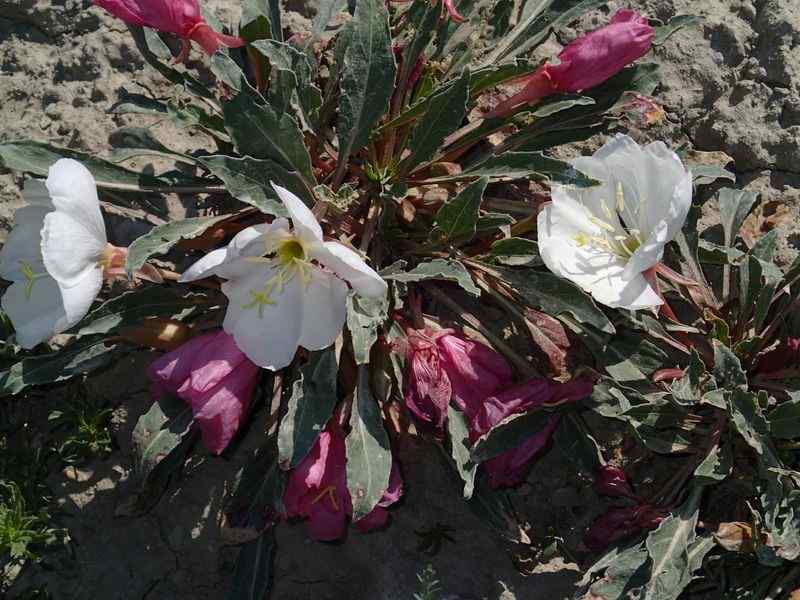
White-tufted Evening Primrose is a delightful wildflower that blooms in late spring and summer, featuring large white to pale yellow flowers that open in the evening or early morning. This adaptable plant can grow in various environments, including dry grasslands and rock outcroppings.
The flowers are known for attracting night-flying pollinators, such as moths, showcasing the wildflower’s important role in the nocturnal food web. In addition to its ecological contributions, White-tufted Evening Primrose is appreciated for its dramatic blooms that bring a soft glow to Colorado’s landscapes as twilight approaches.
Prairie Smoke (Geum triflorum)
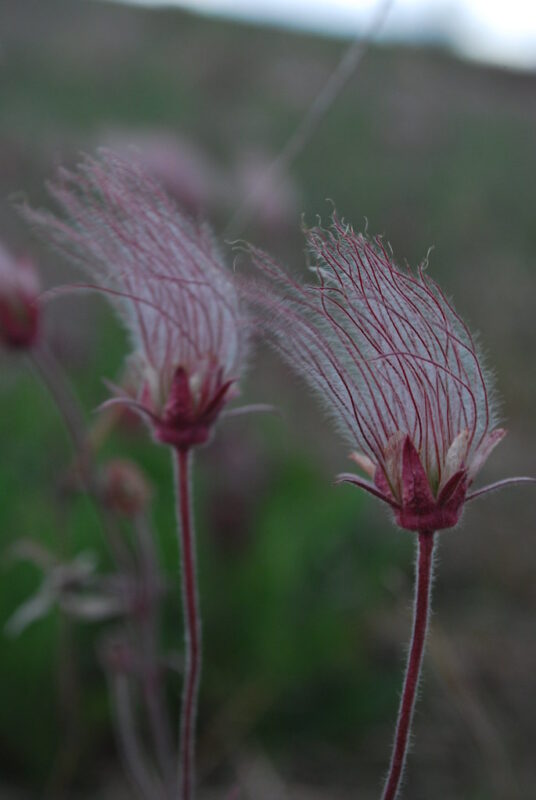
Prairie Smoke is a unique wildflower named for its delicate, feathery seed heads that resemble wisps of smoke at the end of the blooming season. Typically found in dry prairies and rocky slopes, it features attractive pink to purple flowers that bloom in early spring. The plant’s interesting appearance and charm make it a favorite among wildflower enthusiasts.
Notably, Prairie Smoke is a pioneer species, thriving in disturbed areas and contributing to soil stabilization. Its seeds are often plentiful, providing nourishment for various birds and small mammals. The ephemeral beauty of Prairie Smoke adds to the allure of Colorado’s wildflower diversity.
Maximilian Sunflower (Helianthus maximiliani)

Maximilian Sunflower is a robust wildflower with vibrant yellow blooms that brighten the landscapes of Colorado during the late summer and early fall. Typically found in prairies, open fields, and along roadsides, this sunflower thrives in sunny conditions, attracting pollinators as it blooms profusely.
Beyond its aesthetic appeal, the Maximilian Sunflower is valued for its role in supporting local wildlife. Its seeds provide nourishment to birds, while its dense foliage offers shelter for various insects and smaller animals. This sunflower’s resilience and beauty make it a vital component of Colorado’s rich wildflower population.
Sand Penstemon (Penstemon ambiguus)
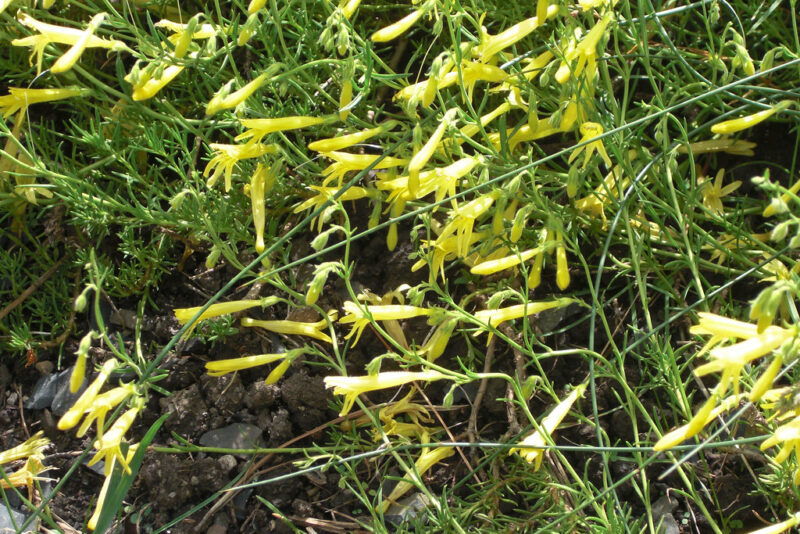
The Sand Penstemon is a low-growing wildflower that captures attention with its attractive tubular flowers, typically blooming in shades of pink and purple. It thrives in sandy soils, often found in dry and open habitats such as dunes, ledges, and grasslands.
This plant not only adds beauty to Colorado’s landscapes but also engages a variety of pollinators, contributing to the health of surrounding plant communities. Its ability to flourish in challenging conditions makes it a notable example of nature’s resilience and importance in maintaining the ecological balance in its native habitat.
Fireweed (Chamaenerion angustifolium)
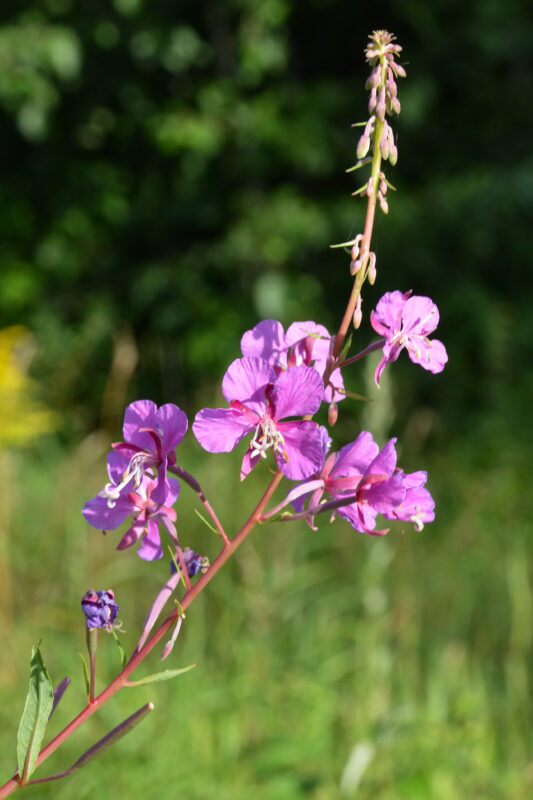
Fireweed is a striking wildflower recognized for its tall spikes of vibrant pink to purple flowers. Thriving in disturbed areas, such as after wildfires, this plant blooms from mid-summer to early fall, creating lush displays in meadows and along roadsides.
While Fireweed thrives in areas cleared by fire, its flowers attract a plethora of pollinators, including bees and butterflies, making it a significant species for maintaining ecological health. Beyond its ecological role, many people appreciate Fireweed for its beautiful aesthetic and ability to restore landscapes after disturbances.
Aspen Daisy (Erigeron speciosus)
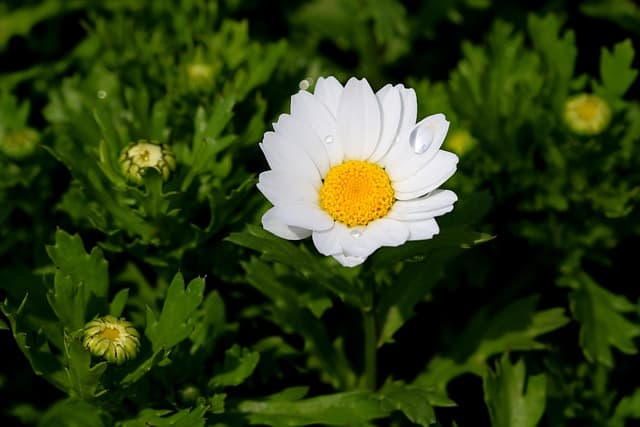
Aspen Daisy, with its soft lavender petals and bright yellow centers, is a lovely wildflower typically found in the understory of aspen forests and meadows. Blooming from late spring to early summer, this perennial adds a touch of elegance to the shaded areas of Colorado’s forests.
Aspen Daisy is particularly well-suited for life in the forest’s dappled light, thriving in well-drained soils and attracting pollinators such as butterflies and bees. Its presence contributes to the rich biodiversity of Colorado’s forest ecosystems, making it an important component of the state’s floral diversity.
Dotted Gayfeather (Liatris punctata)
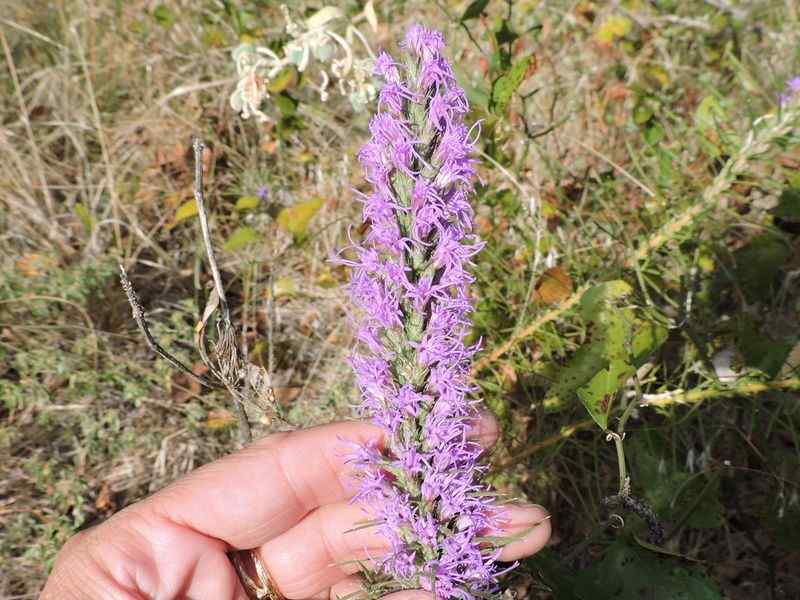
Dotted Gayfeather is a striking wildflower that features tall spikes of purple flowers blooming from mid to late summer. Found primarily in the grasslands and prairies of Colorado, this plant thrives in full sun and well-drained soils.
Attracting a wide variety of pollinators, including bees and butterflies, Dotted Gayfeather adds not only beauty but also biodiversity to its environment. Its long flowering period and adaptability make it a wonderful addition to gardens, where it can be enjoyed by all who encounter it.
Elephant Head Lousewort (Pedicularis groenlandica)
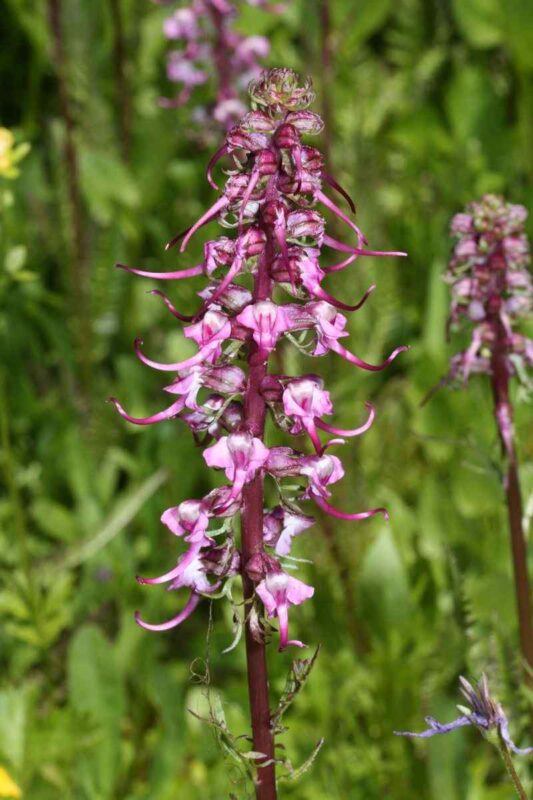
Elephant Head Lousewort is an intriguing wildflower named for the unique shape of its flowers, which resemble the head of an elephant. This perennial blooms in late spring to early summer, often found in moist alpine meadows and wet areas, showcasing its preference for cool, damp environments.
This wildflower supports local ecosystems by attracting various pollinators and supports soil health with its extensive root systems. Its distinct appearance makes it a beloved find for those exploring Colorado’s high-altitude habitats.
Wholeleaf Indian Paintbrush (Castilleja integra)
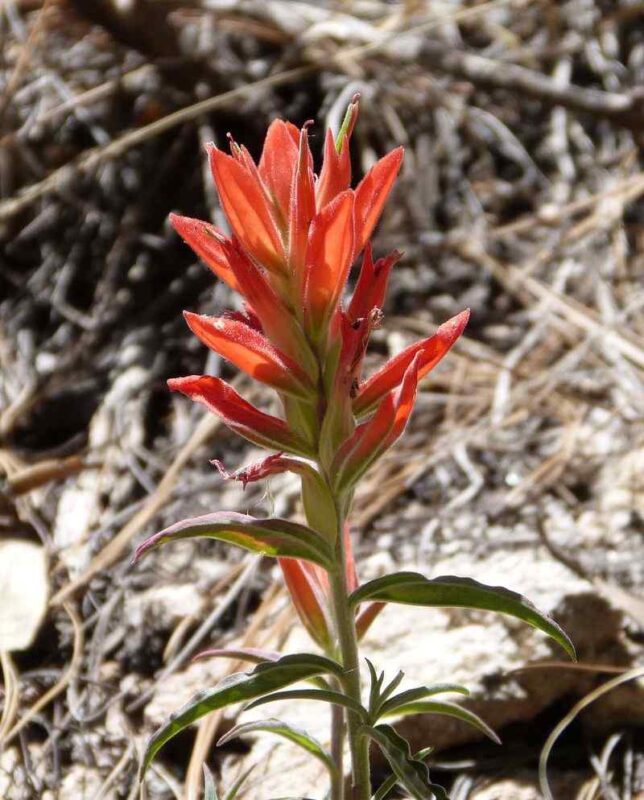
Wholeleaf Indian Paintbrush is a vibrant wildflower known for its striking red-orange bracts that often overshadow the small green flowers hidden within. Blooming in late spring and early summer, this plant thrives in disturbed areas and open grasslands, bringing eye-catching color to the landscape.
What makes Indian Paintbrush particularly interesting is its semi-parasitic nature; it can draw nutrients from nearby plants while still photosynthesizing on its own. This unique adaptation allows it to thrive in various environments. Additionally, it plays a significant role in attracting pollinators, contributing greatly to the overall health of its ecosystem.
Blue Mist Penstemon (Penstemon virens)

Blue Mist Penstemon is a dazzling wildflower known for its enchanting blue flowers that bloom from late spring to early summer. This plant thrives in rocky, well-drained soils, often found in open grasslands and mountainous regions of Colorado.
Blue Mist Penstemon attracts a variety of pollinators, particularly bees and butterflies. Its resilience and ability to adapt to challenging conditions make it an important species for maintaining healthy ecosystems. This plant is also popular among gardeners, appreciated for its beautiful, eye-catching blooms.
Chocolate Flower (Berlandiera lyrata)
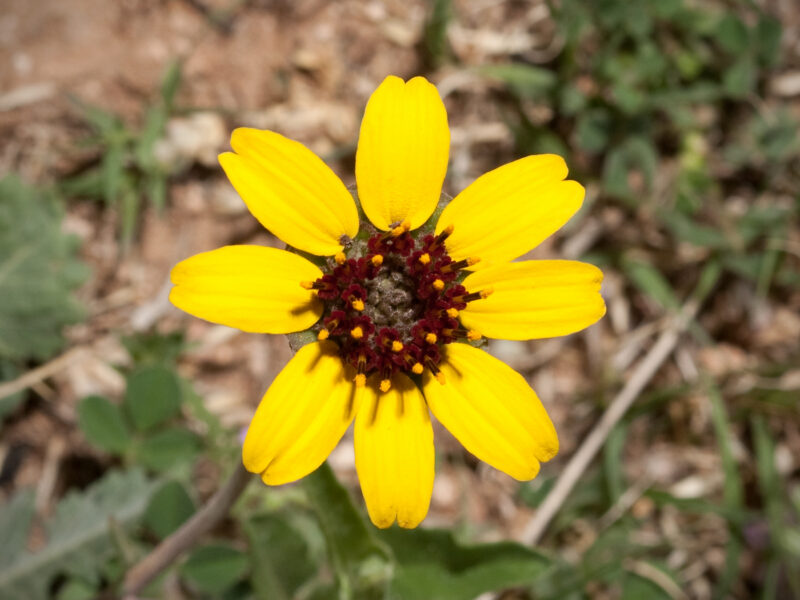
Chocolate Flower is a distinct wildflower recognized for its unique fragrance that resembles chocolate. This perennial features yellow, daisy-like blooms that flourish from spring to summer, often found in dry, well-drained soils across Colorado’s foothills and plains.
The unusual scent of the Chocolate Flower attracts various pollinators, making it an interesting addition to gardens. Its resilience in arid environments highlights the adaptability of Colorado’s native flora, while its unique appeal adds a delightful touch to the landscape.
Gray Rabbitbrush (Ericameria nauseosus)
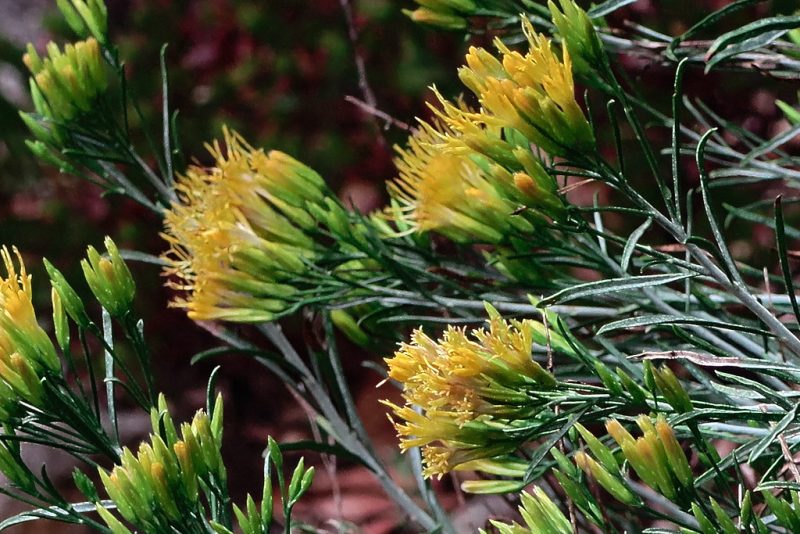
Gray Rabbitbrush is a hardy shrub that blooms with clusters of bright yellow flowers from late summer to fall. Frequently found in disturbed areas and open grasslands, this plant thrives in arid environments, displaying resilience even in tough conditions.
While Gray Rabbitbrush contributes to the beauty of Colorado’s landscapes, it also plays a vital ecological role by providing food and habitat for a variety of wildlife. The plant’s blooms are a crucial late-season nectar source for pollinators, helping to sustain ecosystems as summer transitions into fall.
Nodding Onion (Allium cernuum)
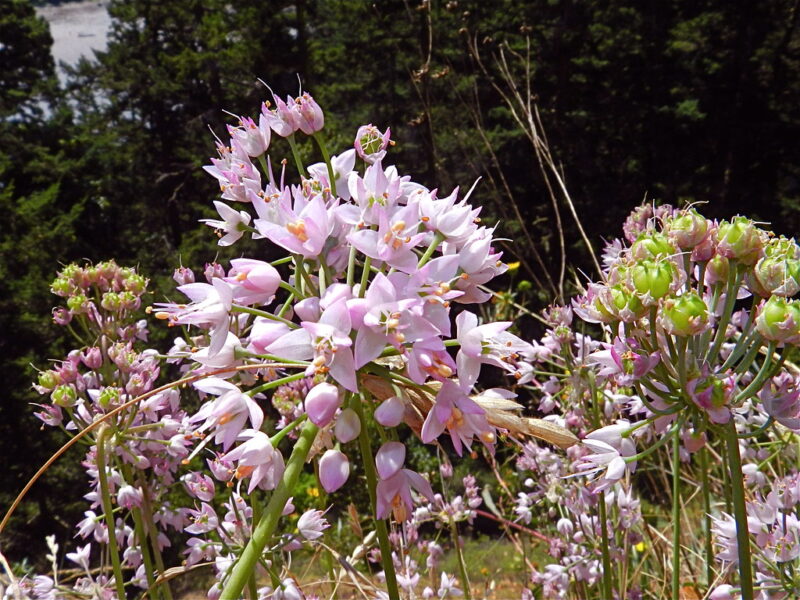
Nodding Onion is a delightful wildflower characterized by its unique, globe-shaped clusters of pink to purple flowers that droop gently at the stem’s end. Blooming in summer, this plant can often be found in grasslands and rocky soils across Colorado.
Beyond its charm, the Nodding Onion is valued for its contributions to local ecosystems. Its flowers attract bees and butterflies, while its bulbs can provide sustenance for various wildlife. Furthermore, aspects of this plant have been used in traditional cuisine, showcasing how native flora can intertwine with food culture.
Rocky Mountain Penstemon (Penstemon strictus)
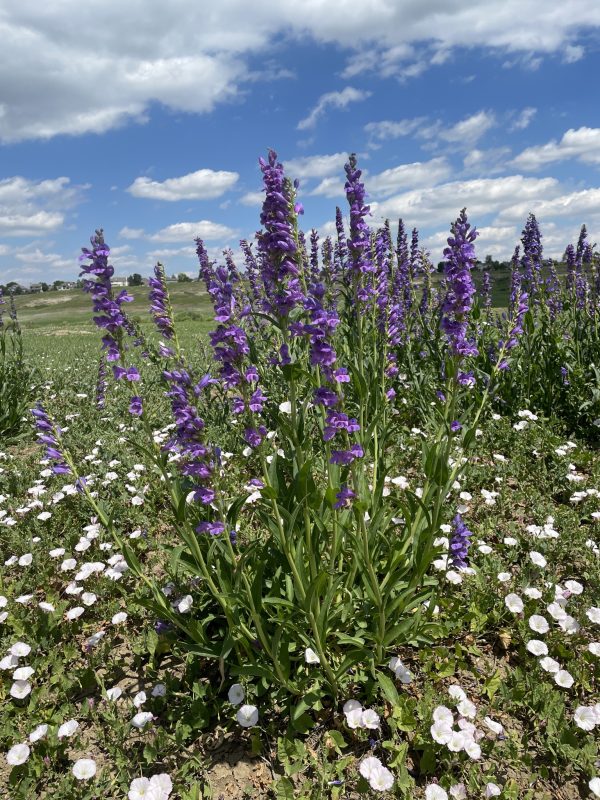
Rocky Mountain Penstemon is a striking perennial wildflower that showcases beautiful spikes of purple to blue flowers. Found in montane and subalpine regions, this plant typically blooms from late spring to early summer, displaying its vibrant colors in rocky outcrops and well-drained soils.
This penstemon is not only visually stunning but also ecologically significant. It attracts a wide range of pollinators, including bees and hummingbirds, while providing essential nutrients to nearby plants. The Rocky Mountain Penstemon’s adaptability to its environment and its role in supporting biodiversity make it a truly worthy component of Colorado’s wildflower population.
Sweet Sand-Verbena (Abronia fragrans)
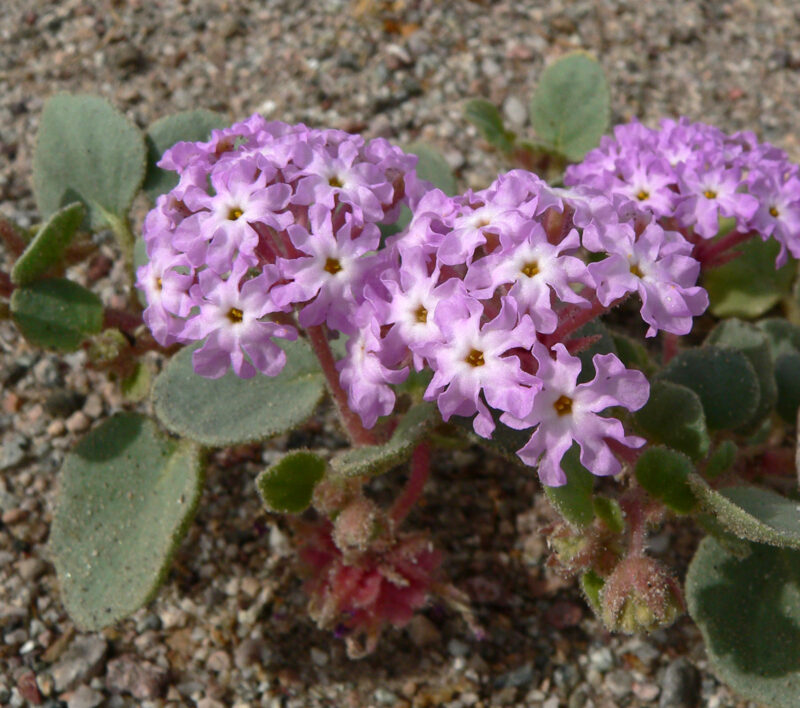
Sweet Sand-Verbena is a charming low-growing wildflower that stands out with its clusters of pink to lavender flowers. Blooming from spring to early summer, this plant is often found in sandy soils and along coastal areas, but it can also flourish in Colorado’s dryer low-altitude regions.
This wildflower is known for its lovely fragrance, enticing numerous pollinators, particularly bees and butterflies. Its ability to thrive in sandy, well-drained soils highlights its resilience, making the Sweet Sand-Verbena a beautiful addition to both wild areas and cultivated gardens.


